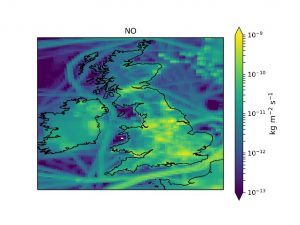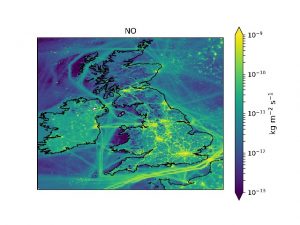Kilometre scale air quality model for the UK

Led by: Benjamin Drummond, Met Office
Although there is an abundance of regional scale air quality models operating with grid lengths typically at 10km, the same cannot be said of ‘complex’ models operating at higher resolution of around a kilometre. As part of the SPF Clean Air programme, the Met Office is developing a kilometre-scale air quality model for the UK. The Met Office currently provides the UK national air quality forecast that uses a numerical model operating on a 12x12km2 grid. This is much larger than the typical scales over which pollution concentrations vary in the atmosphere. It is also significantly coarser than the current UK weather prediction model that operates on a kilometre scale. The aim of this project is to develop a 1.5km grid air quality model covering the whole of the UK that will be in line with existing operational Met Office Numerical Weather Prediction (NWP) models. The benefits of increasing the spatial resolution of the model include:
- improved representation of atmospheric processes (such as convection) and better resolved surface features, which will improve surface interactions such as pollutant deposition;
- improved use of emissions datasets that are available at the higher resolution of km2 resolution such as the National Atmospheric Emissions Inventory;
- improved resolved pollutant concentration gradients in the rural and urban background environment. This is of particular importance for those pollutants that are short-lived in the atmosphere;
- and improved boundary and initial conditions required for the very high-resolution (100m scale) urban air quality models.


The above figures illustrate the improvements in the spatial representations of emissions when using the 2.2km resolution model (on the right-hand side) compared to the 12km resolution on the left. The figures show the annual mean concentrations of Nitric Oxide (NO) over the UK and Ireland. The higher resolution grid highlights emissions from the main road networks that can be clearly identified.